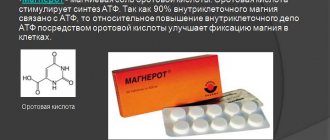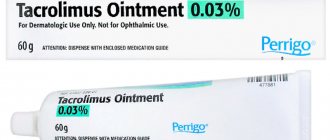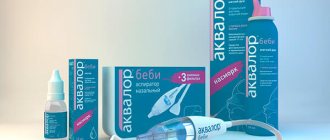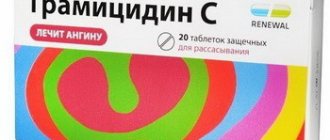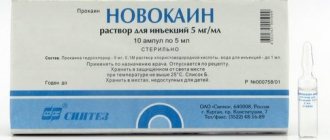Author's rating
Author of the article
Shutofedova Ksenia Yurievna
General practitioner
Articles written
578
about the author
Protargol is a medicine known to medicine since the middle of the last century. Despite the wide selection of modern remedies, protargol in the nose is highly effective and is used both in pediatrics and for the treatment of adults from complicated sinusitis, sinusitis and other acute inflammatory processes in the sinuses. A huge plus of the product is the ability to use it to treat very young children.
Cheaper analogues of protargol - list
The main substitutes for protargol are sialor, vitargol and collargol.
Sialor (Russia)
The drug is a structural analogue of protargol, but it is prepared not in pharmacies, but in pharmaceutical production conditions. The properties and action of sialor are identical to protargol, the indications are the same. According to the instructions for use, Sialor is used from the age of three.
Unlike protargol, the drug is prepared before use. The package contains a sialor tablet and 10 ml of solvent. Then the resulting solution is poured into a bottle and closed with a cap with a pipette. The prepared solution is instilled three times a day, 1–3 drops, depending on the age of the patient. The course of treatment lasts from 4 to 7 days. After preparation, the solution is stored in the refrigerator for up to 14 days.
Against the background of instillation, unpleasant sensations sometimes occur in the nose in the form of itching, burning, and tingling. Skin manifestations: urticaria or other rash are rare. Very rarely - anaphylactic shock, Quincke's edema, atopic dermatitis.
The price for sialor is 4 times higher than for protargol solution and amounts to 280 rubles.
What is better - protargol or sialor? The products have the same composition. Sialor is prepared before use at home, protargol is diluted in a pharmacy and the ready-made solution is dispensed. The price is certainly preferable to Protargol. If there is no pharmacy with a prescription department nearby, you will have to purchase a more expensive product - Sialor.
Vitargol (Russia)
The product is released in the form of an aqueous solution (10 ml bottle). Composition – cluster silver (innovative silver proteinate) + distilled water.
- Indications : replenishment of silver deficiency, immunodeficiency, sinusitis, adenoiditis, herpes, conjunctivitis, others.
- Contraindications : individual intolerance, pregnancy, lactation period.
Directions for use: drops are used internally and topically. To boost immunity for adults, the following doses are recommended: 1–2 drops of solution diluted with 30–50 ml of water. This mixture is taken 20 minutes before meals. Duration of therapy – 1 month. After 30 days, the course of treatment is repeated.
Treatment of rhinitis, sinusitis and adenoiditis involves frequent instillation of vitargol up to 5 times a day. One drop of the drug is administered into each nasal passage. The dosage is the same for conjunctivitis, only the drops are instilled into the conjunctival sac.
What is better - protargol or vitargol? According to scientists, the production technology of vitargol makes it possible to obtain an environmentally friendly drug. The silver particles in it are smaller in size, and there are practically no various impurities. The toxicity of the innovative drug is much less than that of protargol. There is also a dosage form such as Vitargol Forte (drops, nasal and oral spray).
The price and supply of Sialor must be clarified in pharmacies.
Collargol
The drug contains two substances: the first is colloidal silver, the second is albumin protein. In pharmacies you can buy powder, solution (concentrations 0.2%, 1%, 2%, 3%, 5%). Collargol is also presented in the form of a 15% ointment.
All forms of the drug have an antiseptic, bactericidal, anti-inflammatory and astringent effect.
Indications
The main indications are: skin infections, rhinitis with thick snot, inflammatory eye pathologies, others.
Contraindications
In most cases, the drug is well tolerated by patients. If you are intolerant to the composition of this drug, you should think about replacing it with an analogue. Pregnancy and lactation are relative contraindications. In pediatrics, the drug is used from about two years of age, the main thing is that the child does not have negative reactions to the drug. Therefore, during the first instillations it is necessary to take low concentrations of the solution.
Drug review
Protargol is a protein compound of silver ions that has the following types of actions:
- anti-inflammatory;
- disinfectants:
- antiseptic;
- astringents.
- vasoconstrictor;
- wound healing
- antimicrobial.
Once on the inflamed areas of the mucous membrane, silver ions cover the site of inflammation with a kind of film, which avoids the spread of pathogenic microorganisms to other tissues. Under the film, the healing process of ulcers occurs, and the action of pathogens that cause inflammation is suppressed.
A positive feature of this antimicrobial agent is that Protargol does not cause dysbiosis, unlike antibiotics that have similar antimicrobial properties. Simply put, Protargol kills only harmful organisms at the site of inflammation, while not affecting beneficial bacteria that are involved in the digestion process.
How to instill collargol correctly?
Details about the doses of the drug for various diseases are written in the official instructions. As for rhinitis, it is recommended to instill a 2-5% solution into each nostril three times a day. Before using Collargol, you must rinse your nose with saline solution. After clearing the nose of mucus, collargol is instilled. With severe nasal congestion, preliminary instillation of vasoconstrictors, such as tizin, naphthyzin, otrivin and others, is sometimes required.
It is not recommended to use collargol for a long time, as there is a risk of developing argyrosis (silver gradually accumulates in the body and exhibits aggressive properties). In addition, suppression of bone marrow function is also possible.
Comparative characteristics of protargol and its analogues
Patients often compare prices and manufacturers. It so happens that our citizens give preference to foreign medicines. Unfortunately, advertised products overshadow cheap and worthy domestically produced drugs.
For example, to treat uncomplicated bacterial rhinitis, many specialists immediately begin to use antibacterial nasal agents, although in most cases antiseptics (protargol and collargol) will help eliminate yellow and green snot. If protargol does not show its effectiveness in the first two days, then only then should you move on to antibacterial drops and sprays.
Also, do not forget about the proper use of nasal medications. Before instillation, you should always rinse your nose with saline, humer or other saline solutions. 5 minutes after washing, medicinal drops are administered. Only with such treatment is the maximum effectiveness of the products achieved; perhaps an analogue will not be needed.
Protargol or isofra - which is better?
Comparing these products, you can immediately notice the difference in composition. Protargol and isofra are analogues only in terms of therapeutic action. Isofra is based on the active substance – framecitin sulfate (aminoglycoside). Isofra is an antibiotic. Protargol is an antiseptic. Isofra is a nasal spray. Protargol - solution. Isofra is produced in France, Protargol is produced in Russia.
In terms of therapeutic effect, isofra is stronger, since it is capable of destroying bacteria of various strains. Protargol is indicated for uncomplicated runny nose or in combination therapy with other nasal medications.
Isofra is prescribed only in otolaryngology; protargol is used in various fields of medicine.
In pediatrics, isofru is recommended from the age of one, and protargol no earlier than three years. Here isofra has a clear advantage, since the list of acceptable nasal medications at this age is limited.
As for adverse reactions, they are more often local and occur almost equally in both drugs.
Protargol undoubtedly has a price advantage; it is 4–5 times cheaper. The average price of isofra is 280 rubles.
Protargol or isofra? The doctor must answer this question when assessing the clinical picture of the disease.
Collargol is the most popular analogue
This protargol substitute is black in color with a bluish or greenish tint. To make the drug, it must be mixed with water. If sinusitis or rhinitis develops, a drug with a concentration of 2% is usually prescribed. Drops are used 2-3 times a day. 3-4 drops are injected into the nasal openings.
Collargol is actively used in ophthalmology and otolaryngology. Sometimes it is prescribed for the treatment of urological or surgical pathologies. The medicine can be used by both children and adults. The required concentration is prepared by a pharmacist.
Protargol or Polydex with phenylephrine?
Polydexa is an antibacterial drug, Protargol is an antiseptic. Polydexa is a French drug, Protargol is a domestic drug. Polydex release form is spray. Protargol - solution.
Polydexa is a complex product that contains two antibiotics, an adrenergic agonist and a glucocorticoid. This composition allows you to destroy not only bacterial microflora, but also eliminate the phenomena of allergies and inflammation.
The therapeutic effect of polydex is stronger than protargol and isofra. It eliminates not only the cause of the disease, but also quickly suppresses the accompanying symptoms. Just like isofra polydex is used only in otolaryngological practice, the spectrum of action of protargol is wider. It should be noted that Polydexa has many contraindications, this is a disadvantage of this drug.
The permissible age of use for Polydexa is from 2.5 years, for Protargol - no earlier than three years.
Just like isofra, polydexa is 5 times higher than the price of protargol.
Polydexa or protargol? The choice of drug depends on age, stage of the inflammatory process, and the presence of severe bacterial damage. A specialist should evaluate and decide what is best for the patient after collecting an anamnesis.
Release form
Protargol has several forms of release, but is used in medical practice exclusively in the form of an aqueous solution. At the pharmacy you can purchase different forms of the drug:
- dry powder for preparing a solution. This form of release involves preparing the solution directly in the pharmacy, since strict adherence to proportions is important.
- tablets, from which a 2% solution is subsequently made.
- ready solution - 1 and 2 percent. Often sold in glass bottles with a dropper.
For medical purposes, a ready-made solution is dark brown in color, odorless, with a pronounced bitter taste. Storage conditions: cool, dark place. The price of the finished solution is low, about 100 rubles
.
Protargol or Derinat?
Derinat, like protargol, is produced in Russia. There are also similarities in application, which are not limited to otolaryngology.
Protargol is an antiseptic, derinat is an immunomodulator with an anti-inflammatory effect. Derinat has a high detoxifying and regenerating effect.
The differences in release form are as follows: protargol is available only in solution, derinat has a spray, drops and a solution for intramuscular administration.
The composition of Derinat nasal drops is sodium deoxyribonucleate, which means that the products are not structural analogues.
Derinat and protargol are similar in terms of indications for use, but if you read all the instructions in detail, the list of the first drug is wider. Side effects and contraindications are almost the same.
If we consider the pharmacological action, then derinat exhibits more stimulating functions on the immune system, that is, it forces the body to independently fight the infection. Protargol has more pronounced antiseptic properties.
Compared to protargol, derinat is prescribed from the first weeks of a child’s life, which indicates the safety of this drug.
The price of derinat is approximately 3–4 times higher, depending on the dosage form.
Contraindications and side effects
Among the contraindications, it is worth noting individual sensitivity to the components of the drug and allergic reactions. Also, the drug is not used by nursing mothers or during pregnancy.
Side effects are more likely to occur when using a more concentrated solution, therefore in pediatrics it is customary to use only 1 and 2 percent solutions of Protargol. Side effects include headaches, itching, burning, drowsiness and loss of strength. In rare cases, anaphylactic shock may occur.
How to check if you are allergic to Protargol?
When using any product for the first time, it is worth testing for a possible allergic reaction. This is especially true for the treatment of children. In order to check if your child is allergic to Protargol, you should do the following:
- The Protargol solution should be shaken.
- Apply 1 drop to the elbow.
- Check the result after 15 minutes
- In the absence of redness, itching, burning, or hives, an allergic reaction is unlikely to manifest itself later.
If you notice the appearance of one or more of these symptoms, you should not use Protargol.
Protargol or albucid?
Sodium sulfacyl (albucid) is available in the form of eye drops and is an excellent remedy against various infections. The drug can be used from the first days of a child’s life.
In pharmacies, albucid is presented in the form of a 20% and 30% solution. In pediatrics, a 20% solution is used. Sulfacyl sodium is a sulfonamide, protargol is an antiseptic. Albucid is intended for the treatment of eye diseases, and can also be used for runny nose and sinusitis.
What protargol and albucid have in common is the fight against bacterial microflora. The presented drugs are, of course, weaker than antibiotics, but in uncomplicated cases they “work” quickly and effectively.
Albucid is 30–40 rubles cheaper than protargol. Which is better - protargol or albucid cannot be answered unequivocally. Albucid is less toxic, but this is not a reason to refuse protargol. In any case, only a doctor should prescribe medications.
Indications for use of protargol
Due to their properties, proto-head drops are used not only in pediatrics, but also widely used in urology, gynecology and surgery. Protargol is most often prescribed to children for the following diagnoses:
- sinusitis;
- sinusitis;
- runny nose of various etiologies;
- chronic rhinitis;
- conjunctivitis;
- otitis;
- inflammation of the urethra.
You may be interested in the article - Features of the treatment of sinusitis with Protargol.
A special feature of the use of protargol in the treatment of children is the absence of age restrictions, and the drug is prescribed at any age, from the first days of life.
